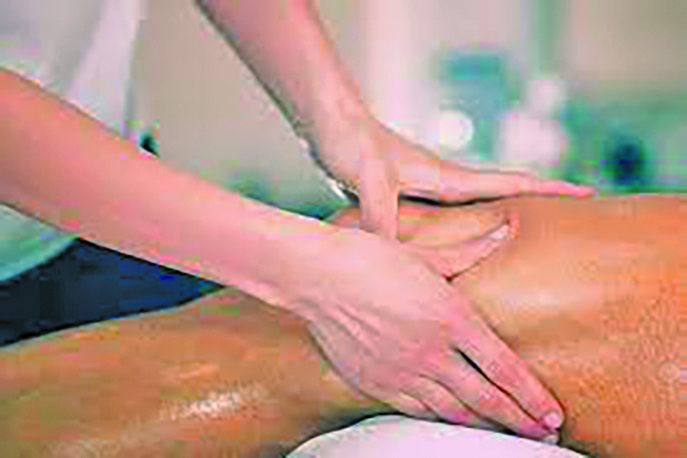In the intricate web of our bodies, there exists a silent hero – the lymphatic system. Often overlooked and underestimated, the lymphatic system plays a crucial role in maintaining our overall health and well-being. Understanding its functions and the concept of lymphatic drainage could be the key to unlocking a path to vitality and improved wellness. This article helps demystify the wonders of lymphatic drainage and explore its profound impact on our everyday lives for you.
The Lymphatic System is a network of vessels, nodes, and organs that work together to transport lymph – a colorless fluid containing white blood cells, proteins, and waste products. Think of it as a sophisticated waste removal system for the body, ensuring that toxins and unwanted substances are filtered out and eliminated. Unlike the circulatory system, the lymphatic system lacks a pump like the heart, relying on muscle contractions and external stimuli for proper functioning.
 Lymphatic drainage, deeply rooted in the principles of promoting balance and harmony within the body, aligns seamlessly with the philosophies that have shaped India’s approach to health for centuries. Ayurveda, India’s ancient system of medicine, revolves around the concept of doshas – the fundamental energies that govern the body. Lymphatic drainage in physiotherapy aligns with Ayurvedic principles by promoting the balance of these doshas, particularly in cases of excess Kapha, associated with congestion and stagnation. The Ayurvedic practice of Panchakarma, a cleansing and rejuvenating therapy, emphasizes the removal of toxins from the body. Lymphatic drainage complements this philosophy by supporting the body’s natural detoxification processes, aiding in the elimination of impurities.
Lymphatic drainage, deeply rooted in the principles of promoting balance and harmony within the body, aligns seamlessly with the philosophies that have shaped India’s approach to health for centuries. Ayurveda, India’s ancient system of medicine, revolves around the concept of doshas – the fundamental energies that govern the body. Lymphatic drainage in physiotherapy aligns with Ayurvedic principles by promoting the balance of these doshas, particularly in cases of excess Kapha, associated with congestion and stagnation. The Ayurvedic practice of Panchakarma, a cleansing and rejuvenating therapy, emphasizes the removal of toxins from the body. Lymphatic drainage complements this philosophy by supporting the body’s natural detoxification processes, aiding in the elimination of impurities.
In Ayurveda, the concept of Vata pertains to movement and flow within the body. Lymphatic drainage, with its focus on enhancing the flow of lymph, aligns with the Ayurvedic goal of maintaining smooth and unobstructed pathways for energy and fluids. Yoga, deeply rooted in Indian philosophy, emphasizes the interconnectedness of the body, mind, and spirit. Lymphatic drainage in physiotherapy resonates with this holistic perspective by addressing not only physical ailments but also contributing to mental and emotional well-being. Lymphatic drainage is based on a sound understanding of the lymphatic system, a key component of the body’s immune and circulatory systems. Physiotherapists, trained in this modality, use gentle manual techniques to stimulate the flow of lymph, facilitating the removal of waste products, toxins, and excess fluid from tissues.
In our community, where conditions such as edema, joint stiffness, and post-surgical recovery are prevalent, the physiological benefits of lymphatic drainage are particularly significant. By reducing swelling and enhancing circulation, this modality becomes a valuable ally in the physiotherapist’s toolkit, aiding in the restoration of mobility and overall well-being.
Conditions Benefiting from Lymphatic Drainage:
Post-Surgery Rehabilitation: In an age where surgical interventions are common, especially in cases of joint replacements or orthopedic procedures, lymphatic drainage proves instrumental in post-surgery rehabilitation. It helps reduce swelling, accelerates healing, and improves range of motion.
Chronic Edema And Lymphedema: Conditions such as chronic edema and lymph-oedema, often associated with impaired lymphatic function, find relief through lymphatic drainage. Physiotherapists employ targeted techniques to alleviate swelling and enhance the body’s ability to manage fluid balance.
Orthopedic Conditions: Our community is known for a range of orthopedic conditions, from arthritis to sports injuries. Lymphatic drainage complements traditional physiotherapy interventions by addressing inflammation and promoting tissue healing.
Postnatal Care: In a culture where postnatal care is of paramount importance, lymphatic drainage emerges as a gentle yet effective approach to supporting new mothers. It aids in the reduction of postpartum swelling and promotes overall recovery.
Stress-related Disorders: Mumbai’s fast-paced lifestyle often contributes to stress-related disorders. Lymphatic drainage, with its calming effects on the nervous system, become a valuable tool in physiotherapy for managing stress and promoting relaxation.
How Does Lymphatic Drainage Work?
Lymphatic drainage is typically performed by trained professionals, like certified lymphatic massage therapists or physiotherapists. The technique involves gentle, rhythmic strokes that follow the natural flow of the lymphatic system. The therapist applies light pressure to stimulate the contraction of lymphatic vessels and encourage the movement of lymph toward lymph nodes, where filtration and purification occur. Additionally, specific hand movements and sequences are employed to target areas with increased fluid retention or congestion. The entire process is painless and soothing, often described as a calming massage that leaves individuals feeling refreshed and invigorated.
DIY Lymphatic Drainage Techniques:
While professional lymphatic drainage sessions are highly beneficial, there are also simple techniques that you can incorporate in your daily routines to support lymphatic health:
Dry Brushing: Use a soft-bristled brush to gently stroke the skin in the direction of lymphatic flow before showering. This stimulates the lymphatic vessels on the skin’s surface and helps remove dead skin cells.
Deep Breathing: Practice deep diaphragmatic breathing to enhance the natural pumping action of the lymphatic system. Inhale deeply through your nose, allowing your belly to expand, and exhale slowly through your mouth.
Stay Hydrated: Proper hydration is essential for optimal lymphatic function. Ensure you drink an adequate amount of water throughout the day to support the flushing out of toxins.
Movement / Exercise: Regular physical activity, especially exercises involving muscle contractions, promote lymphatic circulation. Walking, swimming, and yoga are excellent choices.
Elevate Your Legs: For a short period each day to encourage lymphatic drainage from the lower extremities.
In the intricate dance of our bodily systems, the lymphatic system emerges as a silent choreographer, orchestrating a symphony of health and vitality. Understanding the significance of lymphatic drainage unveils a powerful tool for promoting well-being and preventing illness. Whether through professional sessions or simple daily practices, incorporating lymphatic drainage into our lives can be the key to unlocking a path to optimal health – one gentle stroke at a time! As we demystify the wonders of lymphatic drainage, let us embrace the potential for a life enriched by vitality, resilience, and balance!
Tandorasti and Ushta Te!!
- Anatomy, Physiology And Physiotherapy: The Wacky World Inside You - 20 April2024
- Beyond Numbers: Being Kind To Your Body Post-40 - 16 March2024
- Marvels Of Lymphatic Drainage Demystified - 25 November2023
